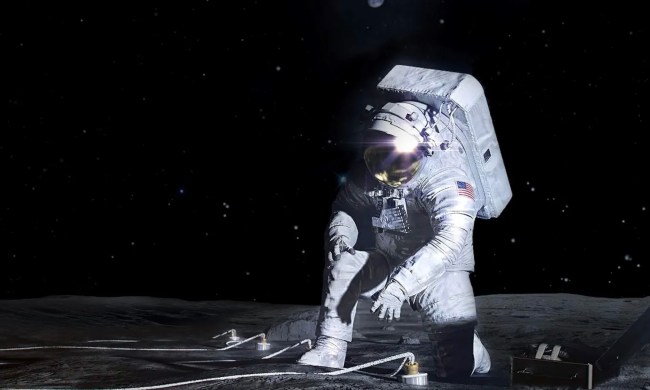This gorgeous image shows a fiery stunner called the Rosette Nebula that’s located 5,000 light-years away from Earth. Imaged by the Dark Energy Camera (DECam) instrument on the Víctor M. Blanco 4-meter Telescope in Chile, this cloud of dust and gas acts as a stellar nursery and houses a young star cluster at its center.
Unlike other telescopes, such as the James Webb Space Telescope, which looks in the infrared wavelength, the DECam looks in the optical wavelength, so it sees similar colors to what the human eye would perceive. The colors in this image are so bright and vivid due to the starlight from the massive young stars in the cluster, which give off large amounts of ultraviolet radiation, thereby ionizing nearby hydrogen gas. The ionized gas glows brightly, giving the nebular its striking appearance.
“The billowing red clouds are regions of H-alpha emission, resulting from highly energized hydrogen atoms emitting red light,” NOIRLab explains. “Along the walls of the central cavity, closer to the massive central stars, the radiation is energetic enough to ionize a heavier atom like oxygen, which glows in shades of gold and yellow. Finally, along the edges of the flower’s petals are wispy tendrils of deep pink glowing from the light emitted by ionized silicon.”
The nebula is huge, at 130 light-years across, but you can see there is a hollow area at its center where there is a lack of red or yellow, indicating the presence of gas. This central region has been hollowed out by the process of star formation, as the dust and gas has formed into clumps that have gradually attracted more and more matter through gravity until these clumps collapse into a core that forms the basis of a new star.
These stars formed a cluster named NGC 2244 around 2 million years ago, and as the stars, evolve they produce stellar winds that blow away nearby dust and gas and prevent more stars from forming nearby.
These winds carved out the hollow at the center of the nebula and, eventually, they will bring about the end of the nebula as well. In around 10 million years’ time, the radiation from these stars will have pushed away so much of the dust and gas that the nebula will disappear, leaving just the stars remaining without their rose-shaped cloud around them.




